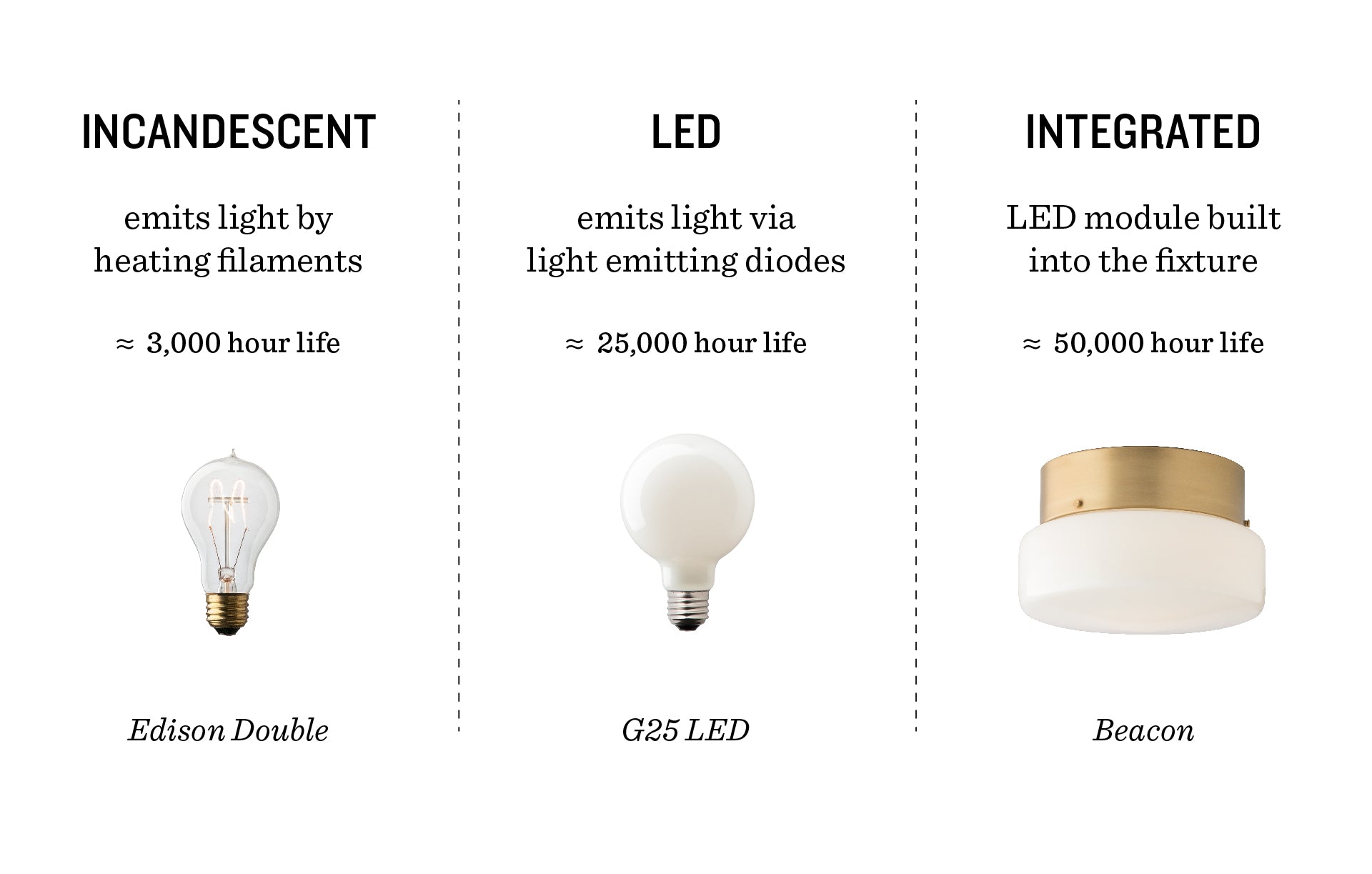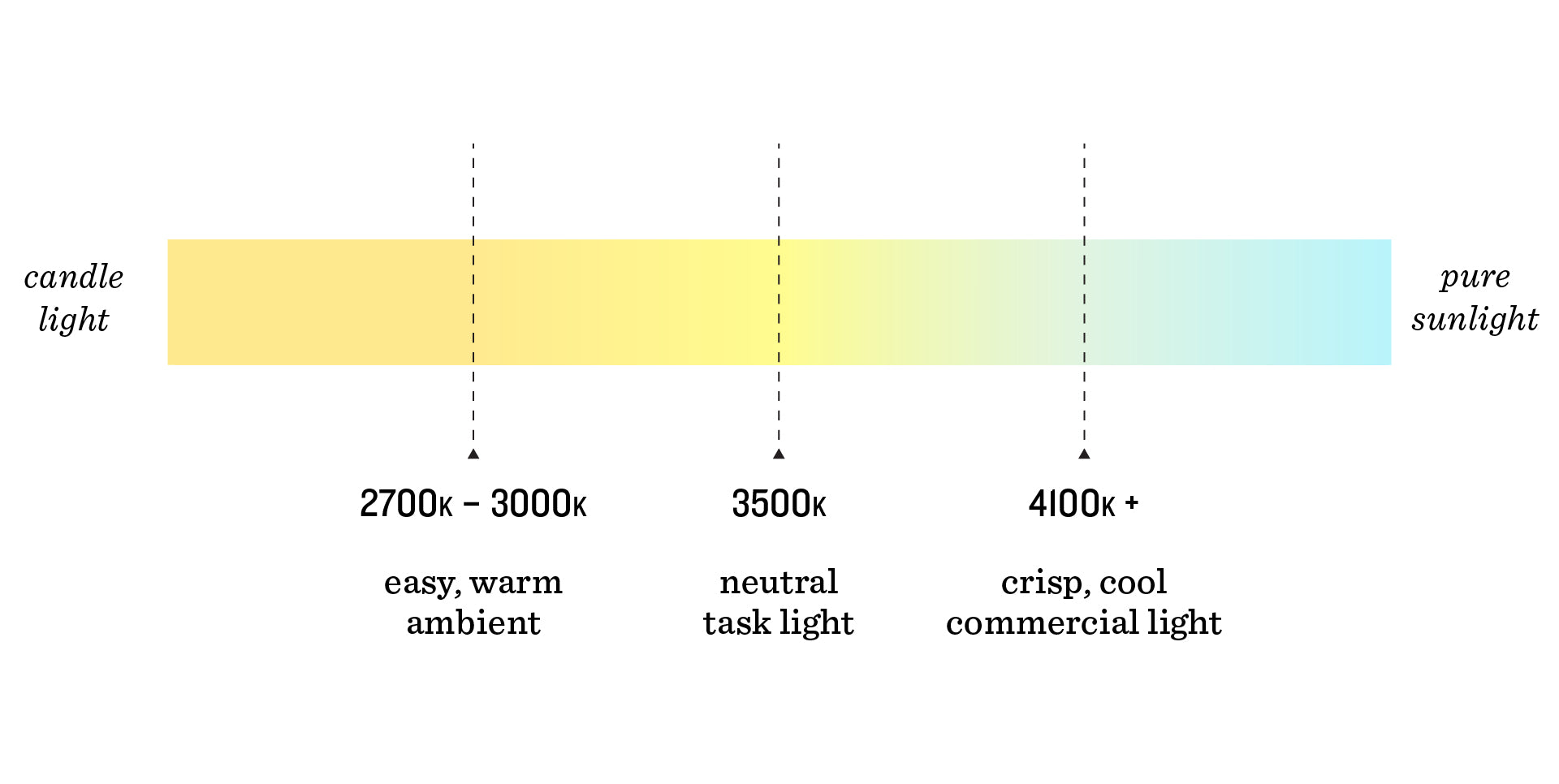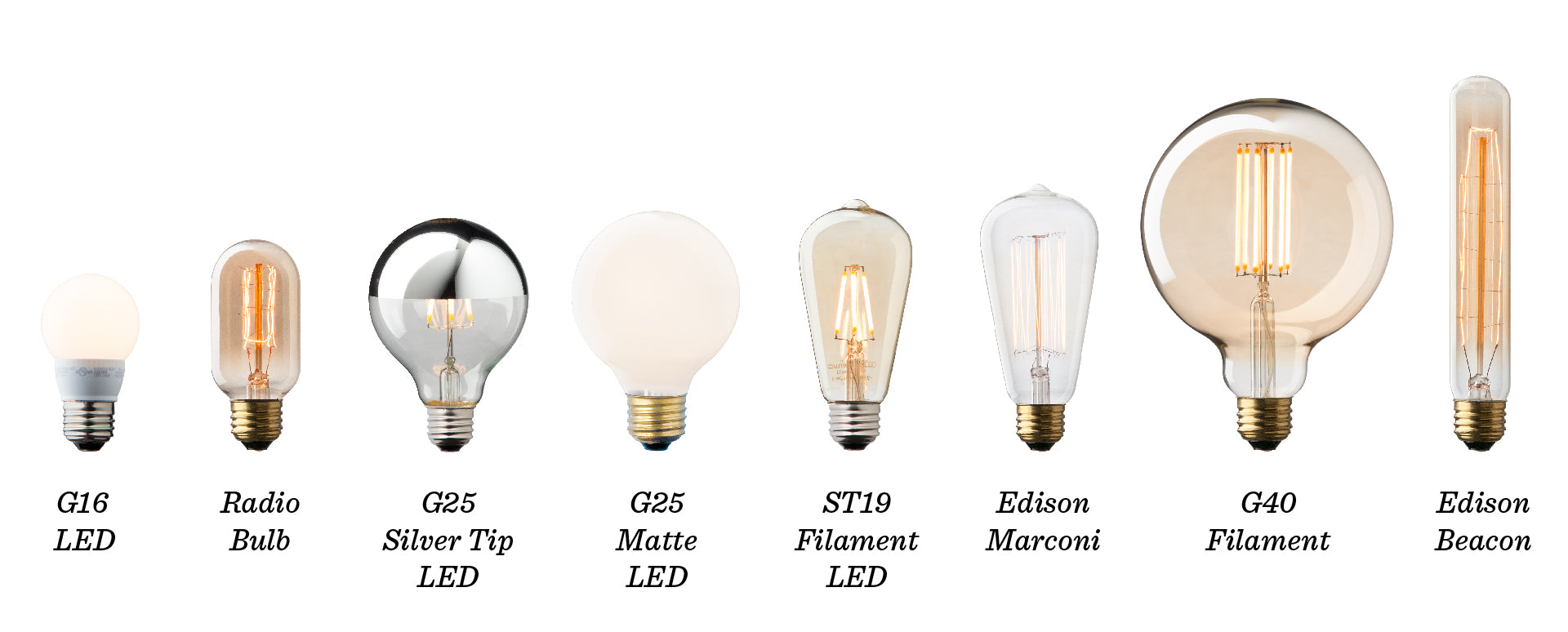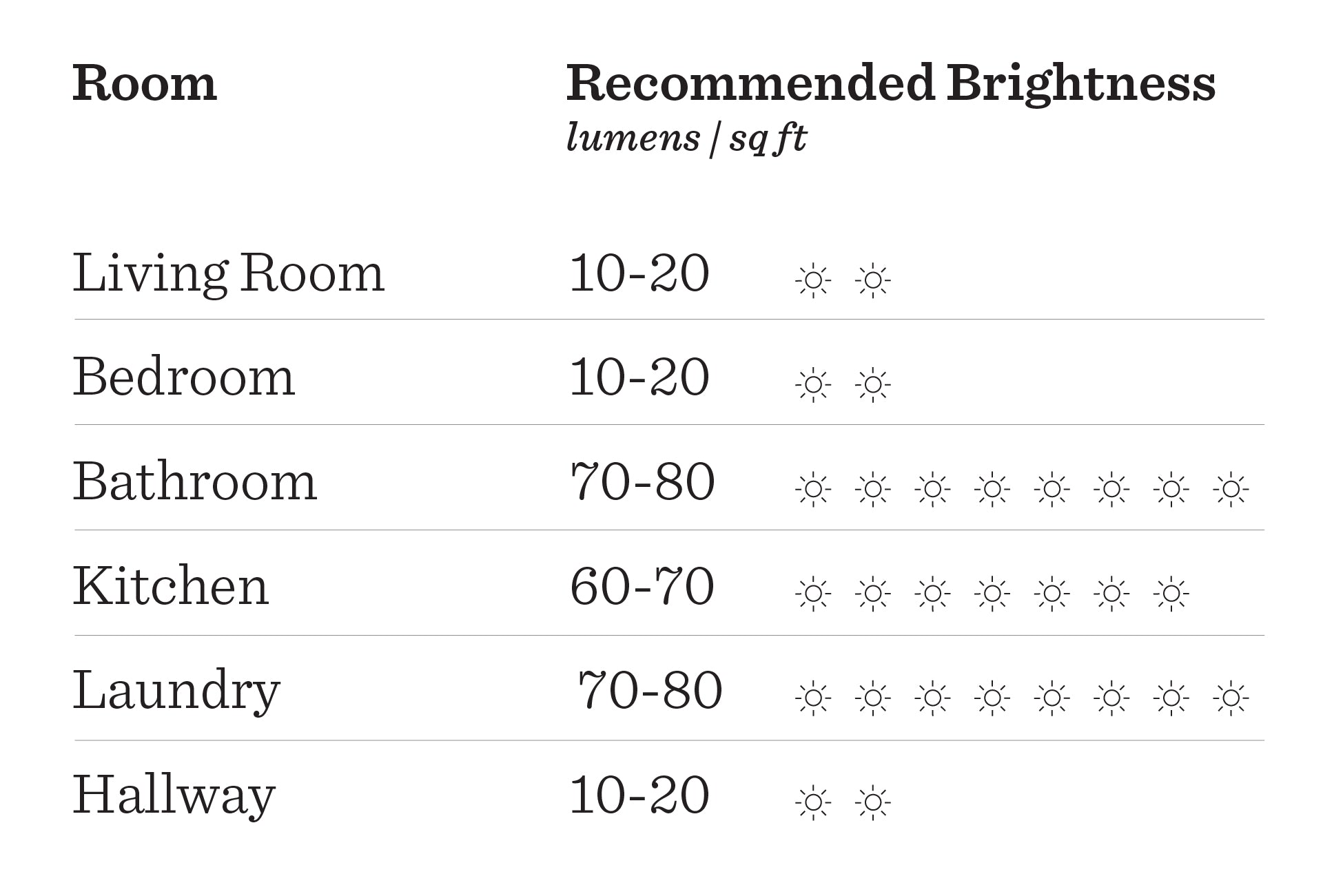How-To: Light Bulb Buying Guide

Editor's Note: This guide was originally published in 2019. As of August 1, 2023, sales of incandescent bulbs are banned nationwide. Read our tips for swapping out incandescent light bulbs for LEDs here.
Many people think about light bulbs in the same way they think about paper towels for their kitchen: purely pragmatic objects that are best purchased generic, in bulk, and at discount. But if you aspire to create a truly warm and welcoming home, this mindset robs you of the unexpected pleasure of finding the perfect bulb to complement every room and light fixture.
To help you navigate the many differences in shape, size, and style of light bulb that are available today, we’ve created the short guide below. If you need additional help choosing the perfect bulb for your Schoolhouse fixture, feel free to contact our Customer Support Team.

During the past couple of decades, several types of light bulb technology, including incandescent, compact fluorescent, LED, and others, were competing to become the go-to light source in homes around the world. Today, that competition is over and LED technology is the clear winner. With that said, the type of bulb you choose will depend on your personal preference and aesthetics. The three main lighting sources are: incandescent, LED, and integrated LED.

Incandescent bulbs provide a warm, ambient glow and are perfect for decorative use. These bulbs come in a variety of unique shapes and sizes and are used primarily for ambience rather than utility. Keep in mind that while there is currently a place for incandescent light bulbs, the future of lighting technology lies in LED bulbs.

LED bulbs are energy efficient and use about a tenth of the electricity of an equivalent incandescent bulb, saving you money on your power bill and reducing the environmental impact of lighting your home. Where in the past, the light from LED bulbs was considered harsh and unpleasant, evolving technology has allowed their color temperature to become softer and warmer. They also last much longer than the standard incandescent bulb, and the technology has become much more cost-effective than it was previously.
In recent years, new innovations in LED technology has taken over the market. From remotely turning your light on and off to adjusting the color temperature of the bulb from your phone,smart bulbs allow automation in a way that is convenient and user-friendly. When you look at the upsides, it’s pretty clear that LED should be the standard for most lighting tasks.

Integrated LED has the perks of an LED Bulb, with the added benefit of being built into the fixture. Depending on how much the fixture is used, you may not have to change the Integrated LED module for decades to come. As a bonus, this system is better at controlling the temperature of the LED module, which improves the system’s lifespan compared to its LED bulb counterpart. While a filament LED bulb may only last 3,000 hours, an integrated LED module can be expected to last about 50,000 hours.

Color temperature, uses the scientific unit, Kelvin (K), to measure light color or how light appears to the human eye when a bulb is illuminated. In short, the lower the Kelvin rating, the warmer the light will be. Keep in mind that the color temperature you select for a room depends on functionality. For example, most people feel comfortable with warmer light (2700K or lower) for relaxed settings such as a living room or dining room. In areas where you need task lighting such as a kitchen or laundry room, it's best to stick closer to neutral lighting that is around 3000K.

Light bulb manufacturers use a specific code of letters and numbers to indicate the shape, size, and base of bulbs. We keep bulb shopping simple by designing all of our fixtures (with the exception of the Integrated LED fixtures, which don’t require bulbs at all) to use an E26 base. It's also important to consider the light bulb’s dimensions. When buying bulbs for a fixture with a shade, the bulb will have to fit inside the shade. You'll find the height and width of the bulb on the product page.

As a general rule, the more activity that takes place in a space, the brighter its lights need to be. Kitchens function best when they have plenty of light to reach into dark cupboards and illuminate work surfaces. Spaces like offices and living rooms, however, tend to benefit from several types of dimmable accent lighting. Most of us grew up thinking about the brightness of a light as measured in watts. Watts measure how much energy is required to illuminate a bulb, whereas lumens measure the actual light output. Since lumens are a far more accurate way to measure brightness, it’s worth retraining yourself to think about lighting in terms of lumens per square foot. To figure out how many lumens an area will require, take the square footage of the area and multiply it by the number of lumens suggested below.

Dimmers allow you to adjust the brightness of the light fixture with ease. All of our light fixtures are dimmer compatible, but not all LED bulbs are compatible with all dimmers. To find out if your dimmer works with a specific bulb, you can either look on the product page or check with the manufacturer of the dimmer. Most major dimmer manufacturers have a downloadable pdf of which bulbs work best.


Hopefully, this guide has given you the tools you need to shop for light bulbs. But when all is said and done, experimentation is the best way to dial in your personal space because every room has its own unique requirements. Take some time to swap in different light bulbs and watch how your space changes.


















